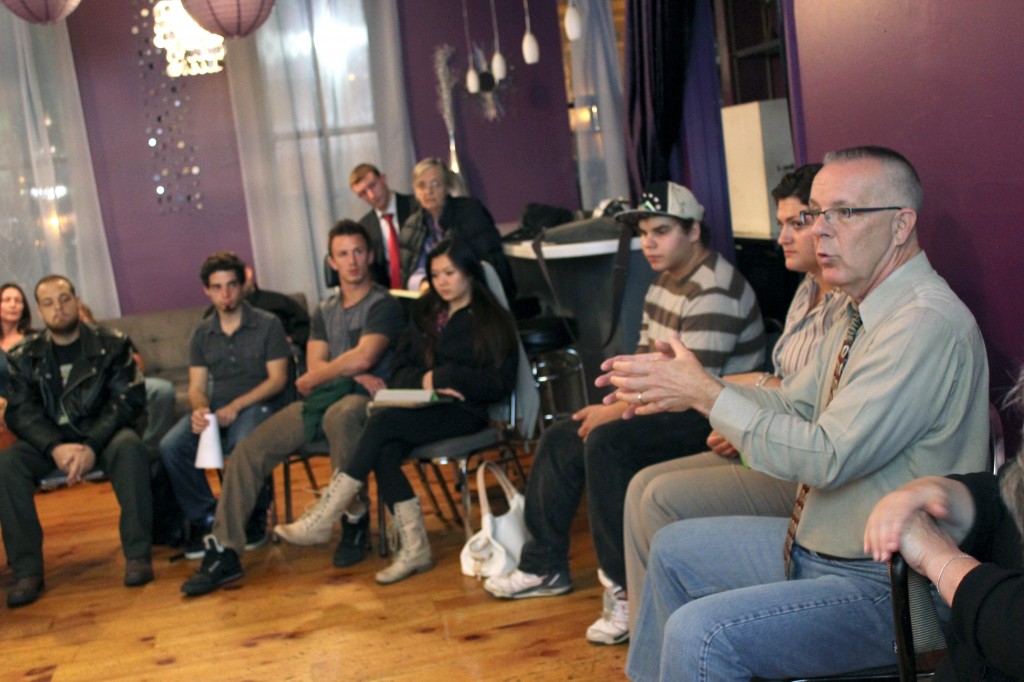
Local artists are making the streets of Binghamton their canvas in an upcoming campaign to beautify the city.
The Department of Public Art presented its vision for the city’s aesthetic appearance to an audience of students and community members on Tuesday at the Lost Dog Café.
The DPA, sponsored by the Center for Gender, Art and Culture and Quarter Yellow Studios, intends to improve the appearance of the city in an effort to bring the community together and celebrate its history. They are currently working with Binghamton-based artists on a citywide mural project.
“It’s about beautification and enhancement of the public realm,” said Mark Bowers, speaker on behalf of the DPA and a capital program analyst for the Department of Transportation. “Our goal is to reawaken the sense of pride in the residents of Binghamton.”
The slideshow accompanying the presentation showed various works of public art, some made legally in coordination with the DPA and some not. Many of the projects showed examples of how public art can bring people together.
The presentation was sponsored by the Binghamton Community Lab, which was organized by David Currie, executive director of the Binghamton Regional Sustainability Coalition, and David Sloan Wilson, distinguished professor of biology and anthropology at Binghamton University. Currie said the Community Lab has been going on for about two or three years.
A discussion took place Tuesday after the presentation in which members of the community voiced their concerns regarding issues such as funding and local awareness. The audience discussed how to best promote a sense of community in the city.
“It was nice to see people from all sorts of different organizations come together to talk about a better Binghamton,” said Brian Guilfoyle, a senior majoring in environmental studies.
David Francisco, a resident of Binghamton, supported one of the aims of the department to showcase the abilities of local artists and train them in creating murals.
“We need [a program] that is permanent for artists to do this all the time, because some artists are just going to [make street art] regardless.” he said. “People who are doing it illegally are rushed, they’re not able to do something that is really great or shows their full potential, and this kind of [program] really allows artists to do that.”
Not all members of the audience were in agreement. While the DPA insisted that public art improves the quality of life for all citizens, one woman raised the question of whether or not the artwork was really worth the trouble it takes to make. She expressed concerns with a group of artists gathering to paint on the concrete in the middle of the street.
“[About] the circle project that we saw on the screen, the neighbors circulated a petition saying that they never wanted to see it again,” said Mary Webster, a resident of Edward Street in Binghamton. “They said they didn’t like it, they thought it was bad for the neighborhood. [They said] that it was not building up the neighborhood, but that it was tearing it down.”


